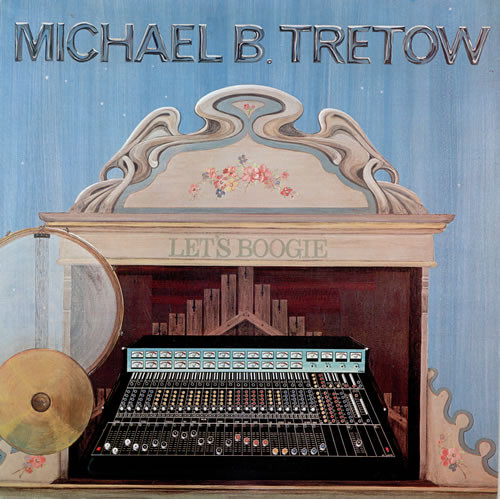The History of ABBA, Chapter 4
Playlist in Youtube:
https://www.youtube.com/watch?v=wBpXWvxZ64Y&list=PLFsPu591tB7VAAkMlZ3LZt2tnccxW9Zj-&index=96
Listen the Podcast (in spanish)
We continue in 1974, when
ABBA performed on major European television programs and began a tour at the
end of 1974, first in several European countries and then in Sweden in early
1975. With two albums already released, the concert featured 17 songs, some
from their upcoming album, which had yet to be released. Although Björn and
Benny generally try to recreate the studio sound in concert, they made a change
to the song "Rock n' Roll Band," where the girls sing instead of
Björn. Unfortunately, we only have a recording of this version, thanks to a
fan.
At the end of 1974,
Swedish television invited Björn and Benny to submit a song for the 1975
Melodifestivalen. The song "Bang-A-Boomerang" received new Swedish
lyrics by Stig Anderson and was retitled "Bang en Boomerang." It was
recorded by the duo Svenne & Lotta (Svenne Hedlund of the Hep Stars and his
wife Lotta, now under the Polar Music label). Produced by Björn & Benny,
with a different arrangement, the song finished third in the Swedish charts in
February 1975 and became one of Svenne & Lotta's biggest hits, spending
seven weeks on the Svensktoppen radio charts.
That summer, Agnetha
performed two songs from her new album live, which we'll discuss later.
In her spare time, Frida
recorded the single “Med Varann” with her friend Björn Skifs.
Björn Skifs & Frida – Med Varann
ABBA released "I Do,
I Do, I Do, I Do, I Do," which also received little airplay.
Later that year, the
release of their self-titled third studio album, ABBA, and the single
"S.O.S." regained their presence in the UK charts, where the single
reached number 6 and the album number 13. "S.O.S." also became ABBA's
second number 1 single in Germany, their third in Australia, and their first in
France. It
also reached number 2 in several European countries, including Italy.
Interestingly, in France,
"S.O.S." appeared on the B-side of "Bang-A-Boomerang," but
that didn't prevent it from becoming the number 1 B-side in that country.
The album "ABBA"
was recorded between August 1974 and March 1975, and its songs are hits that we
all know today, with the possible exception of "Man in the Middle."
This album elevated ABBA beyond the ranks of Eurovision Song Contest winners
and into an international pop group.
The cover art was a
response to criticism from Swedish journalists, who described ABBA's music as
too commercial. The Rolls-Royce was lent by Ivar Kreuger, and the rear photo at
the Castle Hotel (now the Hotel Riddargatan) was taken by Ola Lager.
Of course, the group's
success was further consolidated with the follow-up single, "Mamma
Mia," which reached number 1 in England, Germany, and Australia, among
other countries.
"Mamma Mia" was
not originally intended to be released as a single. However, given that in
Australia, the singles "I Do, I Do, I Do, I Do, I Do" and
"S.O.S." They spawned an ABBA mania, forcing RCA in that country to
request a new single in the middle of summer.
Finally, the Stig agreed
to the request, and "Mamma Mia" was released in August in Australia
before being released in other countries.
During the summer, and to respond to the demand for a charity album, ABBA, with nothing to offer, recorded a medley of three royalty-free American songs, and thus the medley "Pick A Bale Of Cotton/On Top Of Old Smokey/Midnight Special" was born. To this day, ABBA is the only ABBA recording in their discography not created by Björn and Benny.
With such success, ABBA promoted
their albums throughout Europe and even in the United States, but at the end of
the year, to rest, each member embarked on a special activity.
In November, Frida
released her third album, this time under the Polar Music label and with Benny
as producer, of course!
The success of
"Ensam" was immediate, especially thanks to the first track,
"Fernando," written in Swedish by Björn, Benny, and Stig.
Agnetha also finally
released her final album under the Cupol label, with whom she had a contract
until the end of the year.
"Elva Kvinnor I Ett
Hus" was an ambitious project by Agnetha, who wanted to tell the story of
twelve women in a house. But the record label didn't let her finish her idea,
and in the end, eleven women ended up in that house, leaving room for
"S.O.S.," translated into Swedish, as the final song.
Stig had also released his
first LP the previous year, and one of its tracks is "Baby Twist," a
duet with his five-year-old daughter, Marie, who is now the wife of Tomas
Ledin.
Michael B. Tretow would
release the LP "Let's Boogie" in 1976 with the help of ABBA.
Five ABBA musicians
reunited under the name Nashville Train to record an ABBA cover album. Only one
song wasn't a cover, but it was written by Björn and Benny, and an excerpt from
it can be heard in the 1977 ABBA film.
Nashville Train - Please Change Your Mind
From 1974, Björn and
Agnetha and Benny and Frida spent time at a summer house they bought on the
island. from Viggsö in the Stockholm archipelago. Stig already had another
house there and suggested they spend their vacation away from the crowds. Björn
and Benny also fixed up a cabin right between their houses to work together and
write music. With a piano and a guitar, they spent their days searching for
songs, and since they didn't know how to write music, they recorded them on
cassette.
One day, Benny returned
with a recording and played it to Frida. She burst into tears upon hearing such
a beautiful melody. Agnetha and Björn said that you never know if a song would
become a hit, but in this case, it was clear it would be ABBA's biggest hit to
date. You
can all guess it was "Dancing Queen".
A few days later, they recorded a demo, which, coincidentally,
was filmed by Swedish television. Quite
a stroke of luck, since that verse was ultimately cut from the final version.
It is only found in the
Spanish version recorded in 1980 by the girls, because Michael B. Tretow made a
mistake with the master.
1976
In November 1975, ABBA's
first compilation, "Greatest Hits," was released in Sweden. A few
months later, it was released in the rest of Europe with the bonus track
"Fernando," which was the new release of the year. The release of
this compilation was pivotal in the group's history, as it became the quartet's
first album to sell in the millions.
In February, ABBA
performed their version of "Fernando" at Système 2 in France, a month
before the single was released.
In March, ABBA made their
first trip to Australia, where ABBAmania continues to break sales records. As
an anecdote, some people there, not knowing them, thought the girls were models
and didn't sing.
There they recorded, among
others, the famous "ABBA In Australia," with its studio version and
footage taken during their visit to the national park.
This would be the first of the year's major programs, followed by "Musikladen Extra," recorded in January but only broadcast on television in March; "ABBAdabadoo," recorded in Viggsö at the Stockholm studios in August; and "ABBA in Studio 2," recorded in Poland in October.
Also in October, ABBA flew
to the United States to promote the newly released album "Arrival".
The recording sessions for
the album Arrival began in August 1975 and continued until September 1976 at
Metronome and Glen Studios in Stockholm.
Some studio-recorded
tracks, such as "Happy Hawaii" and "Crazy World," were not
included on the album because Björn and Benny believed that each song had to be
so good that any of them could be released as a single.
The album became one of
the best-selling albums worldwide in 1977. It features three of ABBA's biggest
hits: "Dancing Queen," "Money Money Money," and
"Knowing Me Knowing You," and in some places, a fourth hit with the
inclusion of "Fernando." "That's Me" was only released as a
single in Japan.
The album cover photos,
featuring the group posing inside and outside a Bell 47 helicopter, were taken
at Barkarby Airport, northwest of Stockholm.
https://www.youtube.com/watch?v=wBpXWvxZ64Y&list=PLFsPu591tB7VAAkMlZ3LZt2tnccxW9Zj-&index=96























Comentarios
Publicar un comentario